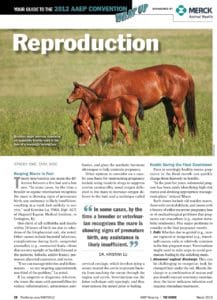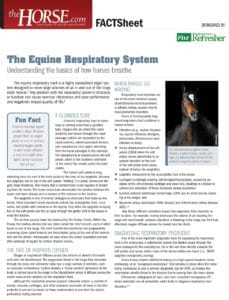
Beware of Problems up to Two Weeks after Foaling (AAEP 2012)
Potentially life-threatening postpartum complications in the mare can arise for up to two weeks after foaling.


Potentially life-threatening postpartum complications in the mare can arise for up to two weeks after foaling.

How a horse is positioned while X rays are taken significantly affects joint balance, researchers say.

Stem cell therapy has evolved rapidly as a treatment approach in equine veterinary medicine.

One researcher describes how practitioners can monitor pregnant mares to minimize reproductive losses.

One researcher says there are five major problems to consider during the final month of a mare’s pregnancy.

Researchers say MRI is invaluable for identifying suspensory ligament lesions and sesamoid bone damage.

Researchers evaluated a new method that could help vets monitor joint infections’ response to treatment.

Choosing a specific stem cell source could maximize treatment efficacy, improving horses’ recovery chances.

Topics include keeping mares in foal, metabolic syndrome and pregnancy, treating fungal infections in mares, and more.

Learn the newest information about stem cell therapy for mare uterine inflammation, superficial digital flexor tendon injuries, and more.

Ovulation in healthy mares was not impacted by acupuncture in this study.

Researchers found no significant improvement in SDFT injuries treated with mesenchymal stem cells.

Equine respiratory system dysfunction is an important cause of exercise intolerance and poor performance in horses.

Prompt diagnosis and treatment of fungal uterine infections are necessary for a positive outcome.

Proper and timely intervention can mean the difference between a live foal and a lost one.

N-butylscopolammonium bromide could be useful for helping veterinarians examine horses’ eyes.
Stay on top of the most recent Horse Health news with